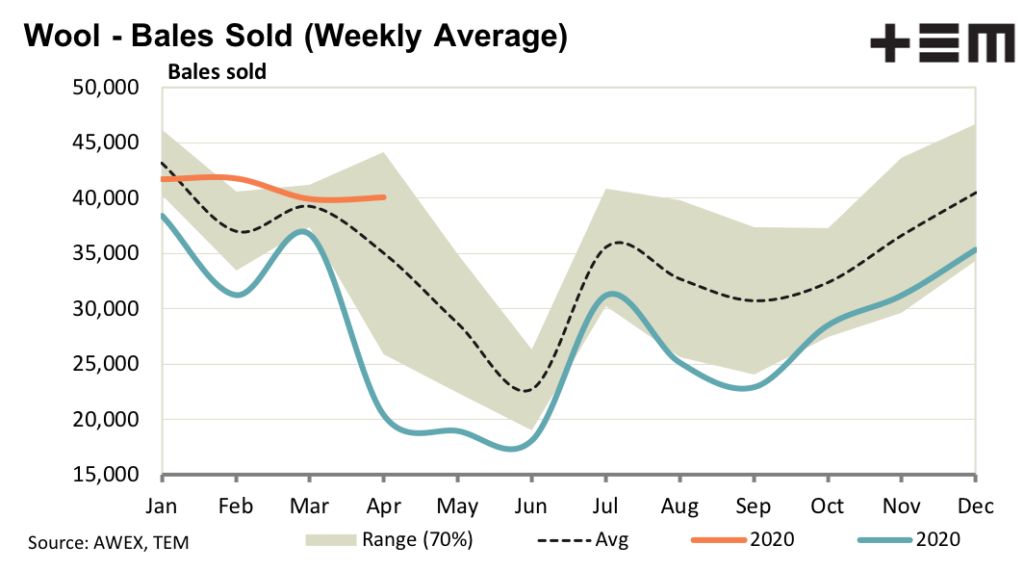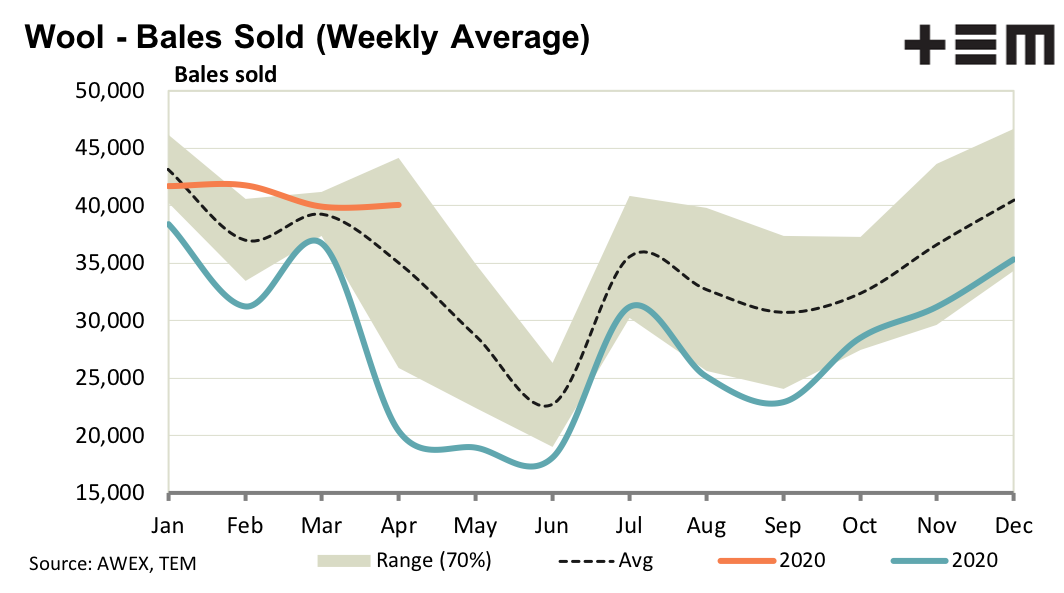Market Morsel: Mixed views

Market Morsel
Views about the wool market along the supply chain are mixed. This is partially being driven by the outperformance of knitwear in relation to worsted processors, the continued weak export demand for Chinese mills, weak current demand and general uncertainty about demand in late 2021.
Prices for other fibres have been weaker in the past month as well, and like wool have steadied in the past week or so. The latest AWTA core test volume data shows wool supply continuing to increase strongly, partly from a recovery from drought in eastern Australia and partly from delayed shipments of wool to store.
March volumes were up 25.6% in farm bales, with the rise coming from eastern states. In the three months to March the year on year rise is a more sober 14%. The change in volume is uneven across the different micron categories, with 17 micron and finer volumes still falling thereby helping to maintain the increased fine micron premiums which have appeared in the past year.
17 Micron
The latest AWTA data confirms that supply remains supportive of fine micron premiums. Coincidentally the forward curves for 17-18 micron have lifted, reducing the discount they were trading at to auction price levels. Discounts for low staple strength remain at minimal levels especially if accompanied by low VM.
19 Micron
The market was better in US dollar terms this week, breaking a four week correction. Low yielding broader merino fleece prices were variable this week, suffering late in the sales as exporters struggled to use them and meet consignment averages.
21 Micron
AWTA data shows that the Australian supply of 21-22 micron wool is well up on year earlier levels, although low by historical standards. The big discounts that 21-22 micron wool is trading at compared to 20 micron and finer will help demand, as processors look to cheapen their inputs. In this case increasing supply may be a positive as it will given buyers some confidence of being able to source wool.
28 Micron
Crossbred volumes remain plentiful by seasonal standards with a wide range of quality, from excellent to very poor. This makes quoting the crossbred market difficult as the AWEX ID does not always reveal the poor nature of the wool on offer. The 28 MPG remains at 0.41 of the 21 MPG – if the 21 MPG rallies then the 28 MPG will be dragged higher.



